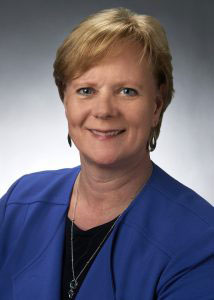General
Q & A with Melissa Adams, publisher of The Merck Manuals
For more than a century, The Merck Manuals have been a trusted source of information for health care providers and patients alike. We spoke with Melissa Adams, publisher of The Merck Manuals, about how they’ve evolved over the years and the significance of making reliable medical information easily accessible for advancing public health.
 Q: The Merck Manuals are a standard bearer for trusted health and medical information for providers and consumers around the world. How did the manuals get their start?
Q: The Merck Manuals are a standard bearer for trusted health and medical information for providers and consumers around the world. How did the manuals get their start?
The origin of The Merck Manual dates back to 1899 when our founder George W. Merck, supported the idea of creating a relevant clinical reference for the medical community tailored specifically for physicians and pharmacists called The Merck Manual of the Materia Medica. The book was an alphabetical compendium of all known symptoms, signs and diseases, as well as an easily accessible resource of all known compounds with beneficial or therapeutic properties to treat these conditions.
Below is an excerpt from the 1899 Merck Manual foreword written by George W. Merck:
“MERCK’S MANUAL is designed to meet a need which every general practitioner has often experienced. Memory is treacherous. It is particularly so with those who have much to do and more to think of. When the best remedy is wanted, to meet indications in cases that are a little out of the usual run, it is difficult, and sometimes impossible, to recall the whole array of available remedies so as to pick out the best. …. In MERCK’S MANUAL, the physician will find a complete Ready-Reference Book covering the entire eligible Materia Medica. A glance over it just before or just after seeing a patient will refresh the memory in a way that will facilitate the coming to a decision.”
Q: How are the manuals adapting to meet needs in the digital age?
The Merck Manuals have continually expanded the reach and depth of its offerings to reflect its current day mission of providing the best medical information of the day to a wide cross-section of users, including medical professionals and students, as well as consumers.
Our goal is to provide the best medical information available in the most popular and convenient formats for all audiences. To that end, we have professional and consumer websites available in 10 languages including English, Spanish, French, German, Italian, Portuguese, Japanese, Chinese, Korean and Russian. Arabic will be added by the end of the year.
We have recently updated our website with many improved features including structuring the content into readable bite-size amounts of information, the use of bulleting and visual aids, and a Key Points section summarizing the most important things to remember.
We have improved the search box and added a "letter spine" for locating health topics and medical conditions alphabetically for those like me who do not know how to spell words like arrhythmia. The added Quick Links to material about first aid and emergencies are a plus, as well as the normal laboratory results section and the many multimedia assets including videos, animations and 3D models.
Free Merck Manual apps for both professionals and consumers are available in six languages. Access to medical information "on the go" without the need for an internet connection is critical when in remote or underserved areas. We are continuing to improve and update our apps and are even adding a light version this year that will take less memory space. Like the website, the apps are free of advertisements and do not require users to register or share personal information, removing many of the barriers that prohibit individuals from accessing the content they need to make informed personal health decisions.


